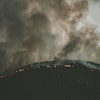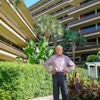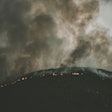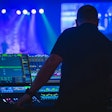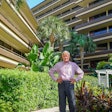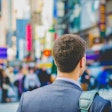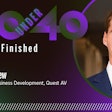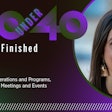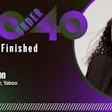John Trovato, managing director of Casa Marina and The Reach, Waldorf Astoria Resorts in Key West, vividly recalls as Hurricane Irma barreled toward Florida.
Hurricane Harvey had just hit Houston with massive destruction on Aug. 25. A little more than two weeks later Hurricane Irma made landfall in the Florida Keys as a Category 4 storm. Its 650-mile path impacted nine states with a direct hit–as a Category 5 hurricane–to Puerto Rico.
“It was dicey,” says Trovato, who was honored on March 22 at the 2018 Samuel’s House Women of Integrity and Men of Valor dinner for his post-hurricane recovery efforts. “The path of the hurricane was changing quite a bit.”
That meant Trovato and his team of employees relied on the pre-planning done months earlier. Specifically, Trovato’s staff had several planning meetings with the city of Key West and its hurricane emergency team.
As Hurricane Irma got closer and the city of Key West declared a mandatory evacuation, Trovato and his team began boarding up the hotel. Only a few employees stayed in the hotel.
While prepared as possible, Trovato says Irma was bigger than he could image. “I was here in the mid-1980s and we had some close ones, but I had never lived through something this large,” says Trovato, whose response to the storm will be remembered for years..
In the initial weeks of recovery after the Sept. 10 impact of Hurricane Irma, Casa Marina housed rescue workers and supplied more than 6,000 meals to local fire and police departments. Casa Marina’s parking lot was turned into an 80-foot helicopter landing area so food and supplies could be flown in and out for its hotel and others.
Trovato recalls those fateful days.
What type of hurricane recovery plan did you have in place?
With any natural disaster, you have to
plan….It was things like testing for power generators, checking supplies, securing adequate food and water, general preparedness, medical supplies, securing the building. Securing the building is [important] you don’t want someone going in there, especially on the beach front.
How did you secure the building?
We blocked all the entrances and pretty much boarded everything with solid 4-inch boards, all the windows and everything. There was no way to get there unless people swam in from the ocean.
How many people stayed inside the hotel?
The only people that stayed were a few associates, engineers and managers. It’s a tough situation, if someone comes knocking on your door and says, “I wasn’t quite smart enough to get off the island,” we weren’t going to turn them away. So they stayed in the main building of the hotel where it was structurally sound.
What disaster recovery tips do you have for other hotels?
You start as early as July, or formulating as early April depending on the water temperatures such as places do in South Africa. You prepare, you prepare, you prepare. You have meetings after meetings. We spent a lot of time making sure the associates if this did occur, knew what to do. We asked chefs “What do you need to order” from a food and water standpoint. Hilton has unlimited resources for helping once you get into a situation like this. They have food trucks coming two days after this thing occurred.
The general awareness was the most important thing. Key West is an island and we are always aware of these hurricanes.
Right. I think people are always surprised how small an island it is when they get on it, that’s its only 2 miles wide and 4 miles long.
It’s has never taken a direct hit. That’s a good thing because of its size. If the eye [of the hurricane] went 15 miles north of us it would be different. We were very fortunate.
How did you organize and what type of clean up groups did you coordinate?
We were fortunate enough our chef’s wife works for the utility company so she was able to get into [the scene]. They were blocking everyone in traffic from coming in and off the island, unless you had a special pass.
The most important thing was to feed people who were working really hard trying to get the city back together which in itself was amazing feat what they were able to do in a short period of time. We had the resources and the bodies so we were really able to get people three square meals a day.
What did you do to help with the post-hurricane clean up?
We created a Casa outReach Program, where we were reaching out as a team to people who needed help. We took the team over there and helped clean up Higgs Beach. We racked, we cleaned up the debris for an afternoon.
We reached out to All Hands Volunteers and they said, 'We’ll give you the supplies, if you go to this church.' Then we went to two houses, tore out the floor boards and got it ready for the construction they needed. Some of the houses didn’t have roofs. We did everything we could to help them get back on their feet.
What’s your disaster planning advice to others in the industry?
You’ve got to take it seriously. You have to prepare all the time, make sure your staff understands what it needs to do.
Why is it important to give back?
Key West is a very small community. We had the resources, a powerful organization with Hilton and the reach. These people have nothing. Casa Marina is the biggest hotel on the island and it’s always been looked up at. We won another [Key Weekly] Bubba award for being the best hotel in Key West.
If you are the preferred hotel in Key West, you want to be the first one out there saying I’m here to help. That goes a long way.
What’s Key West look like now?
People are still calling and asking, 'Is everything okay down there?' We still have meeting planners and everyone. It’s back to normal because everybody embraced the clean-up. We were very, very fortunate. Puerto Rico got devastated. Tourism is a big deal down here. Florida and Key West, it’s a big GDP for the country. You’ve to get it back up and running, and make people feel good. We started off kind of slow this year because I think people weren’t sure whether to plan a vacation down here or not, but the word’s out that Key West is back.
